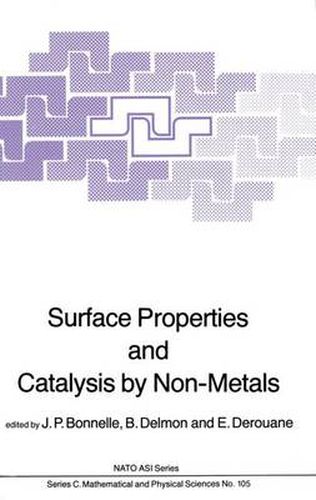Readings Newsletter
Become a Readings Member to make your shopping experience even easier.
Sign in or sign up for free!
You’re not far away from qualifying for FREE standard shipping within Australia
You’ve qualified for FREE standard shipping within Australia
The cart is loading…






This title is printed to order. This book may have been self-published. If so, we cannot guarantee the quality of the content. In the main most books will have gone through the editing process however some may not. We therefore suggest that you be aware of this before ordering this book. If in doubt check either the author or publisher’s details as we are unable to accept any returns unless they are faulty. Please contact us if you have any questions.
In the field of heterogeneous catalysis. it is convenient to distinguish. in a perfectly unjustified and over**simplified way. bet:leen metal catalysts. 2nd the other catalysts. The fj.J st are easy to define : they are those in which a reduced metal is the active phase. It is thus easy to circumscribe. by exclusion, the other class namely the non-metals . We have adopted this definition for the sake of our colleagues working on catalysis by metals, and to avoid a lengthy title like sm’ face pl operties and catalysts by transi tion metal oxides. sulftdes, carbides, nitriles, etc. Defined in this manner, non-metal catalysts represented, in 1980, 84 wt. % of the industrial heterogeneous catalysts. To be more specific, this proportion corresponds to catalysts which, under the working conditions in the industrial ?lant. contain their catalytically active metallic elements in a non-reduced state. It should however be recalled that most metal catalysts are supported on oxides, which, often, repl'esent over 90% (sometimes 99.4% in the case of the platinum reforming catalysts) of the total weight.
$9.00 standard shipping within Australia
FREE standard shipping within Australia for orders over $100.00
Express & International shipping calculated at checkout
This title is printed to order. This book may have been self-published. If so, we cannot guarantee the quality of the content. In the main most books will have gone through the editing process however some may not. We therefore suggest that you be aware of this before ordering this book. If in doubt check either the author or publisher’s details as we are unable to accept any returns unless they are faulty. Please contact us if you have any questions.
In the field of heterogeneous catalysis. it is convenient to distinguish. in a perfectly unjustified and over**simplified way. bet:leen metal catalysts. 2nd the other catalysts. The fj.J st are easy to define : they are those in which a reduced metal is the active phase. It is thus easy to circumscribe. by exclusion, the other class namely the non-metals . We have adopted this definition for the sake of our colleagues working on catalysis by metals, and to avoid a lengthy title like sm’ face pl operties and catalysts by transi tion metal oxides. sulftdes, carbides, nitriles, etc. Defined in this manner, non-metal catalysts represented, in 1980, 84 wt. % of the industrial heterogeneous catalysts. To be more specific, this proportion corresponds to catalysts which, under the working conditions in the industrial ?lant. contain their catalytically active metallic elements in a non-reduced state. It should however be recalled that most metal catalysts are supported on oxides, which, often, repl'esent over 90% (sometimes 99.4% in the case of the platinum reforming catalysts) of the total weight.